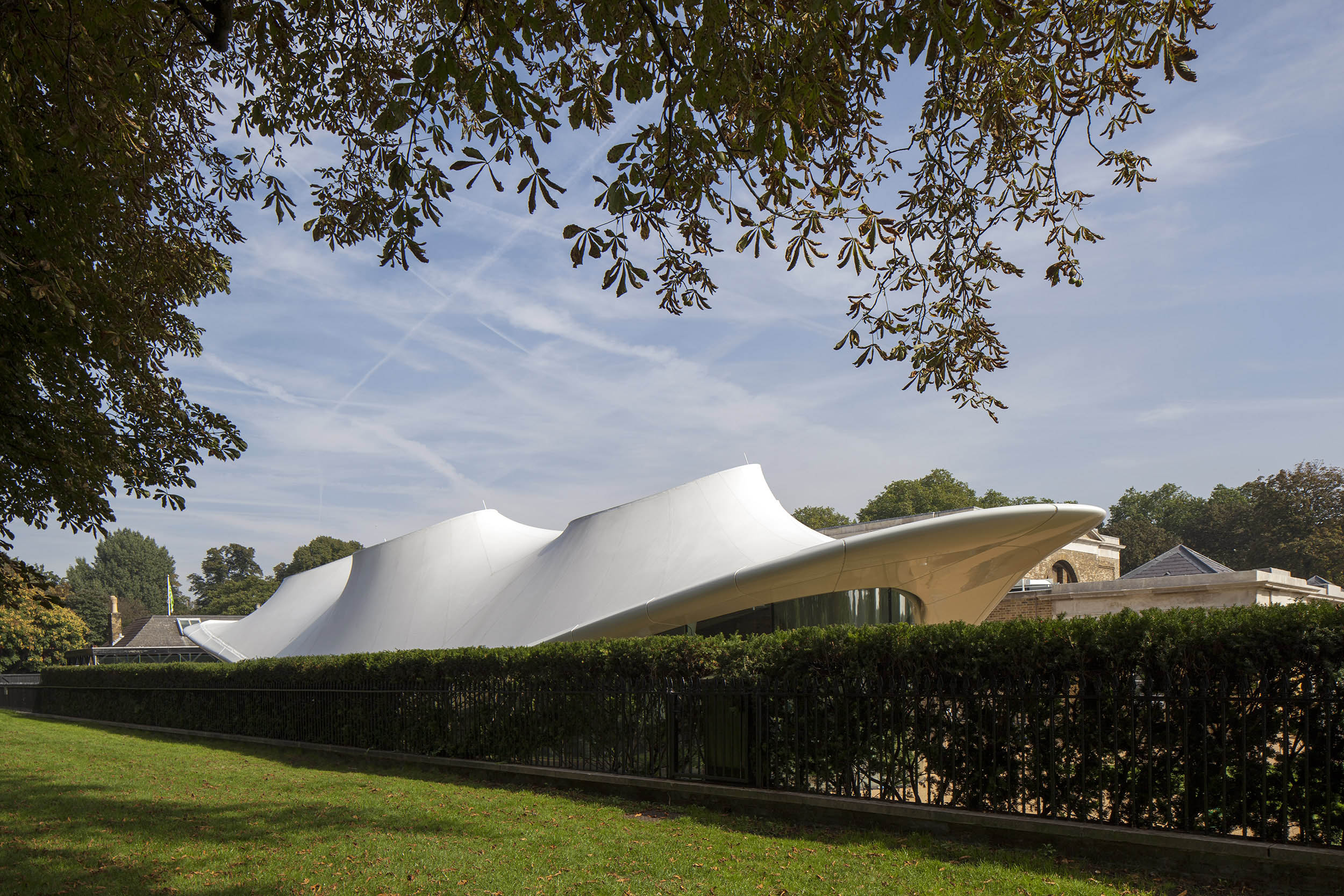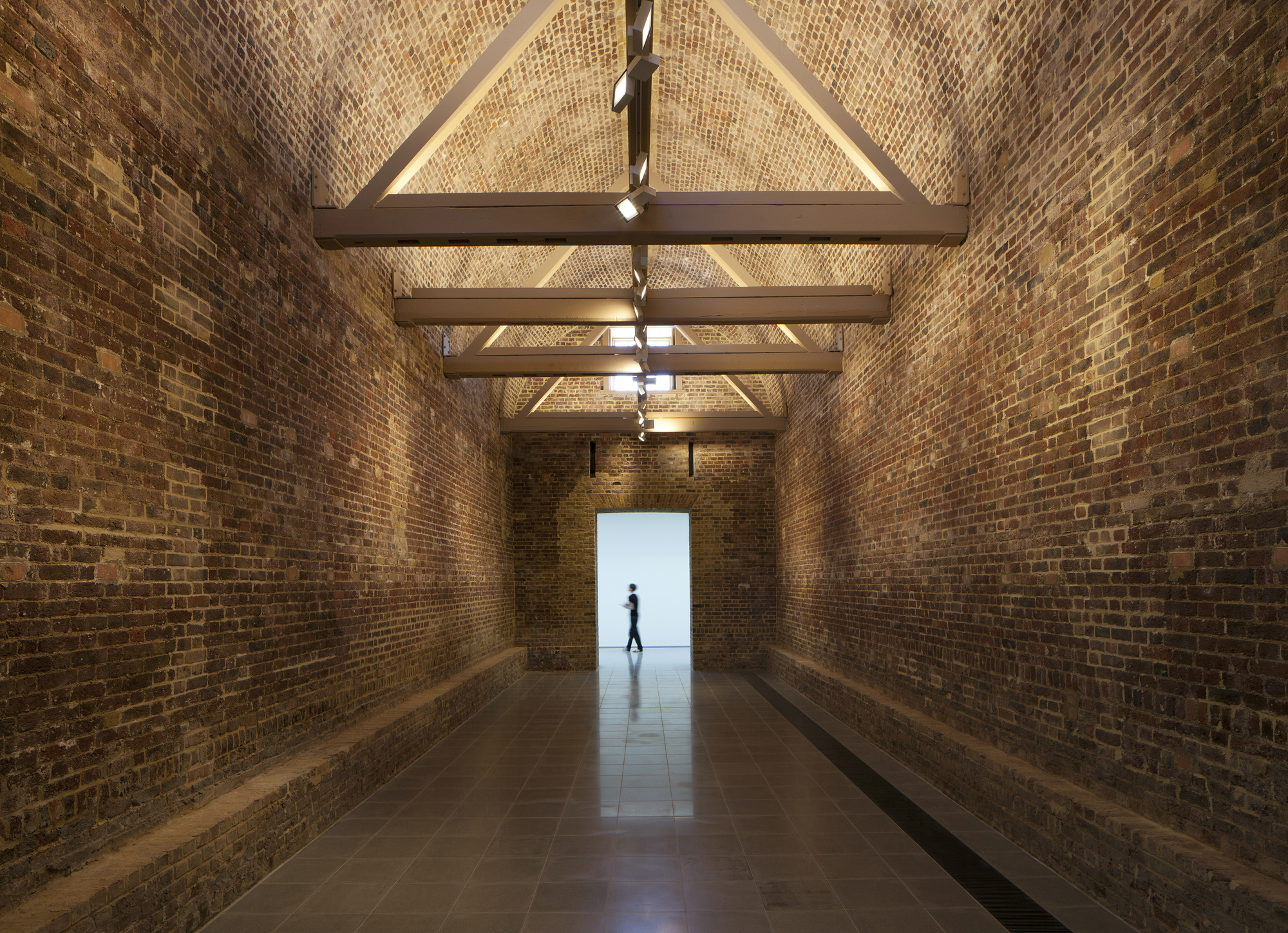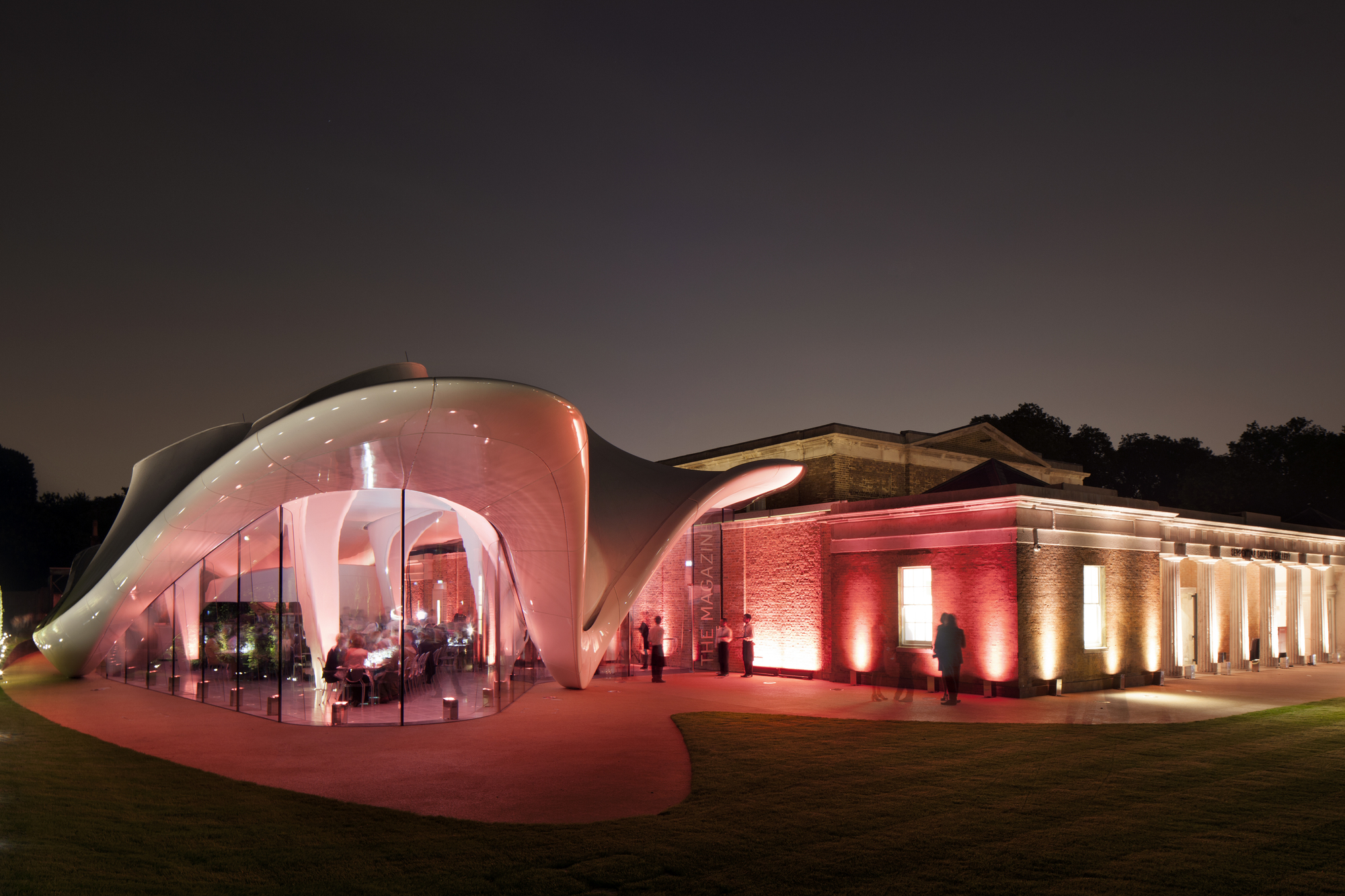Submitted by WA Contents
Opinion:The Serpentine Sackler Gallery Brings The Best And Worst Of Zaha Hadid To London
United Kingdom Architecture News - Oct 09, 2013 - 12:33 4973 views
As cultural institutions around the world increasingly seek global prominence, Zaha Hadid’s portfolio is expanding at an extraordinary rate, and London’s Kensington Gardens is the latest benefactor. At the end of September, the Serpentine Gallery’s new extension opened, comprising the converted, Grade II* listed Magazine Building, and a new, characteristically undulating addition. As the major public commissions continue to flood in, ZHA is simultaneously one of the most loved and hated firms in the industry, and the Sackler Gallery is the perfect epitome of this polarized condition.
First, a quick history lesson: The Magazine Building itself was built in 1805 in the style of a Palladian villa and is exceptional both for its architectural detailing and curious military history. It was used as a gunpowder depot for the army in the event of a "foreign invasion or popular uprising"—the Brits were worried about their own disgruntled people almost as much as Napoleon. Ultimately though, the revolution never occurred, and the building has not housed munitions for 50 years. Its programmatic redundancy meant the building was an ideal choice for the Serpentine’s expansion.

Serpentine Sackler Gallery, photo © 2013 Luke Hayes
While the Magazine’s original function has become obsolete, the elegant vaults of the gunpowder rooms themselves are undeniably timeless, and it is here, within the depths of the original building, that ZHA has shone. All non-historic partition walls within the stores were removed, enabling the original spaces to be reinstated. The firm has shown an admirable level of restraint with its detailing, allowing the unpolished patina of the bricks to be celebrated. The other galleries within the Magazine also have a refreshing simplicity, rightly allowing the work of artists to take center stage: Adrián Villar Rojas’s startling sculpture—an elephant supporting a colossal fragment of fossilized architrave—appears at home upon its carpet of terra cotta bricks.

The Gunpowder Room Gallery
It is perhaps telling that the tight constraints of historical context here led to Hadid’s most subtle of interventions within the Gallery. The same cannot be said of the billowing extension, which has predictably stolen the media limelight from the triumphs of the Magazine’s conversion.
On first viewing, the extension appears entirely derivative of Hadid’s parametric era. The monochromatic wave, devoid of materiality, flirts with the ground before swooping back up, sailing over the parapet of the Magazine with typically aggressive gusto. On closer examination, it becomes clear that the homogenous canopy is, in fact, made from tensile fabric. This must surely go down as a positive progression from ZHA’s steel-heavy iterations of previous pseudo-organic forms, such as theGuangzhou Opera House and the Riverside Museum of Transport in Glasgow.

Serpentine extension rendering. Courtesy of Zaha Hadid Architects

Photo © 2013 Luke Hayes
However, the formal result is ultimately the same: With no strict function to follow (the extension will house a café and "event space"), and with less contextual constraints beyond the walls of the Magazine, Hadid has reverted back to exhibitionist architecture. As the Telegraph’s critic Ellis Woodman eloquently stated: “If you were told you had accidentally wandered into the saleroom of a superyacht vendor, you might not be entirely surprised.”
While the juxtaposition of old and new demands some kind of material contrast, the degree of subtlety with which this contrast is implemented varies wildly depending on the firm appointed. At one end, David Chipperfield’s Neues Museum in Berlin is a beautifully considered adaption of an historic building… at the other, we have Daniel Libeskind’s violent intervention at the Museum of Military History in Dresden. Inside the Magazine there are echoes of the former, while the flaring extension displays all the hallmarks of the latter: within this gallery, architectural brains and brawn appear to have collided, and the overriding result is one of stylistic conflict.
One thing is for sure is for sure though: If the primary goal of ZHA’s appointment was to garner vast amounts publicity for the Gallery, then they have undoubtedly succeeded—for better or worse.
The Angry Architect
**ANGRY ARCHICECT IS AN OPINIONS CONTRIBUTOR TO ARCHITIZER. THE VIEWS EXPRESSED HERE ARE HIS ALONE. INTERESTED IN HAVING YOUR OPINIONS HEARD? CONTACT US AT [email protected]
> via Architizer
